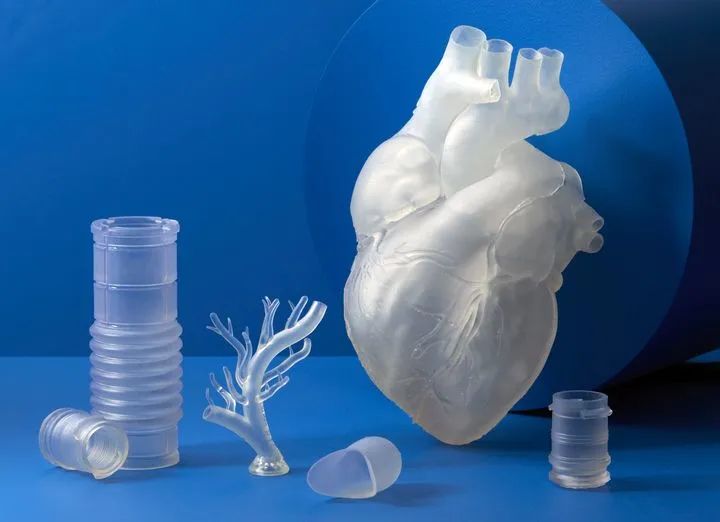Application of solid epoxy resin in 3D printing and Research on improving isotropy
Time:2022-06-17
Solid epoxy resin is widely used in 3D printing and is suitable for producing various functional components. According to a scientific writer named Reginald Davey, the Antarctic bear compiled his understanding of 3D printing. This paper will focus on the application of these resins in additive manufacturing, as well as the recent research on improving their isotropic properties and manufacturing materials with enhanced temperature and strain detection capabilities.
△ analyze the application of solid epoxy resin in 3D printing. Image from shutterstock
Epoxy resin and additive manufacturing
Additive manufacturing is an innovative technology, which is subverting many industries and research fields. Compared with traditional manufacturing methods, 3D printing technology has many advantages, such as less waste, more free design, low cost, rapid production, small batch production and integrated assembly.
Epoxy resin is suitable for many equipment and components as a material. For example, automotive parts, printed electronic materials, coatings, adhesives, fiber reinforced and other composite materials under the traditional process.
△ schematic diagram of preparation stage of epoxy resin for 3D printing. Image from Google
3D printing epoxy resin has advantages over traditional materials due to its low cost and the ability to quickly produce complex geometric shapes. Curing, the type of resin, the role of photoinitiator and curing agent, and the performance of printing components are the key elements to study these advanced materials. Optimizing the printing process and material properties is crucial to improve the commercial feasibility of 3D printing epoxy based materials and components.
Isotropic material
In isotropic materials, the material properties remain unchanged when tested in multiple directions. These materials are different from anisotropic materials, which have different characteristics when tested in multiple directions. Examples of isotropic materials include metals, plastics, and glass. In materials such as epoxy resin which exhibit anisotropic behavior, induced isotropy is an important direction in materials science to produce components with enhanced mechanical properties and functionality.

Material extrusion 3D printing
A material extrusion (MEX) process widely used in 3D printing, also known as melt deposition molding or melt filament manufacturing.
In material extrusion, epoxy filament can be easily treated because it exists in solid form. In contrast, the powder used in selective laser sintering and the resin used in stereolithography are usually harmful, which need to be handled carefully and have certain professional requirements for storage. In addition, compared with other methods, the material extrusion process can handle a wider range of materials, including thermoplastics.
△ application diagram of solid epoxy resin in 3D printing. Image from Google
The material extrusion process is also more cost-effective than other methods, and multi material printing can be easily achieved using multiple extrusion nozzles. The extruded material can be functionalized with other materials without being limited by additives by other technologies, such as selective laser printing.
However, mex process is hindered by the rapid curing of printing materials after deposition. Weak interfacial bonding is caused by diffusion between layers and filling lines, and entanglement limitation. This technology has its limitations, and different technologies are needed to overcome them.
△ solid epoxy resin for mex process. The picture is from the literature of Drucker, s, etc
Mex optimization method
In known studies, several methods have been explored to solve the mechanical anisotropy of mex printing materials.
By optimizing parameters such as printing speed, layer height and width, and temperature, we can achieve as strong layer adhesion as possible. At the same time, the best orientation of the components can be used. The disadvantages of these methods are that they must be implemented separately, and the degree of design freedom is limited.
Other methods include optimizing material properties and manufacturing processes. Resin fillers such as carbon nanotubes can be added and then heated by microwave radiation to promote the diffusion of polymer chains, so as to improve the adhesion between layers.
Some studies have reported the use of gamma radiation to induce crosslinking in filaments, while others have used lasers to induce thermal energy in each layer and improve interlayer adhesion. However, the above methods are carried out without considering the cost, requiring complex equipment and more processing steps.
Isotropy in mex printed epoxy materials
Thermosetting materials are another way to achieve isotropy in mex printing. According to a recent research report on 3D printing, thermosetting polymer filaments can be printed on low-cost mex printers for the first time. The feature of this technology is that it adopts post curing process, which can induce cross-linking, thus overcoming the mechanical anisotropy generated in the mex printing process.
△ printing stage of 3D printing piezoelectric materials. Image from Google
Researchers have used high molecular weight solid epoxy resin in material formulation. The liquid epoxy resin with additives is added to the material formula to realize the multi-functional integration of functional materials.
The authors added single-walled carbon nanotubes to the materials to provide conductivity. They also said that the 3D printing materials can also be added with resin fillers with other characteristics, such as flame retardant and antistatic, which provide opportunities for a variety of applications.
By filling the resin with conductive filler, components with sensing capability, such as piezoelectric sensors, can be printed. In addition, the use of carbon nanotubes can integrate temperature sensing capabilities into smart components. At present, a proof of concept study has been carried out on the temperature and strain sensing functional materials printed by mex.
These findings determine the direction of further research, including the need to further study the sensing ability and pay attention to the electrical anisotropy, repeatability and the effects of different filler loads in materials. These studies demonstrate the potential of 3D printing in developing components with excellent performance and may be applied to a variety of advanced electrical equipment.





